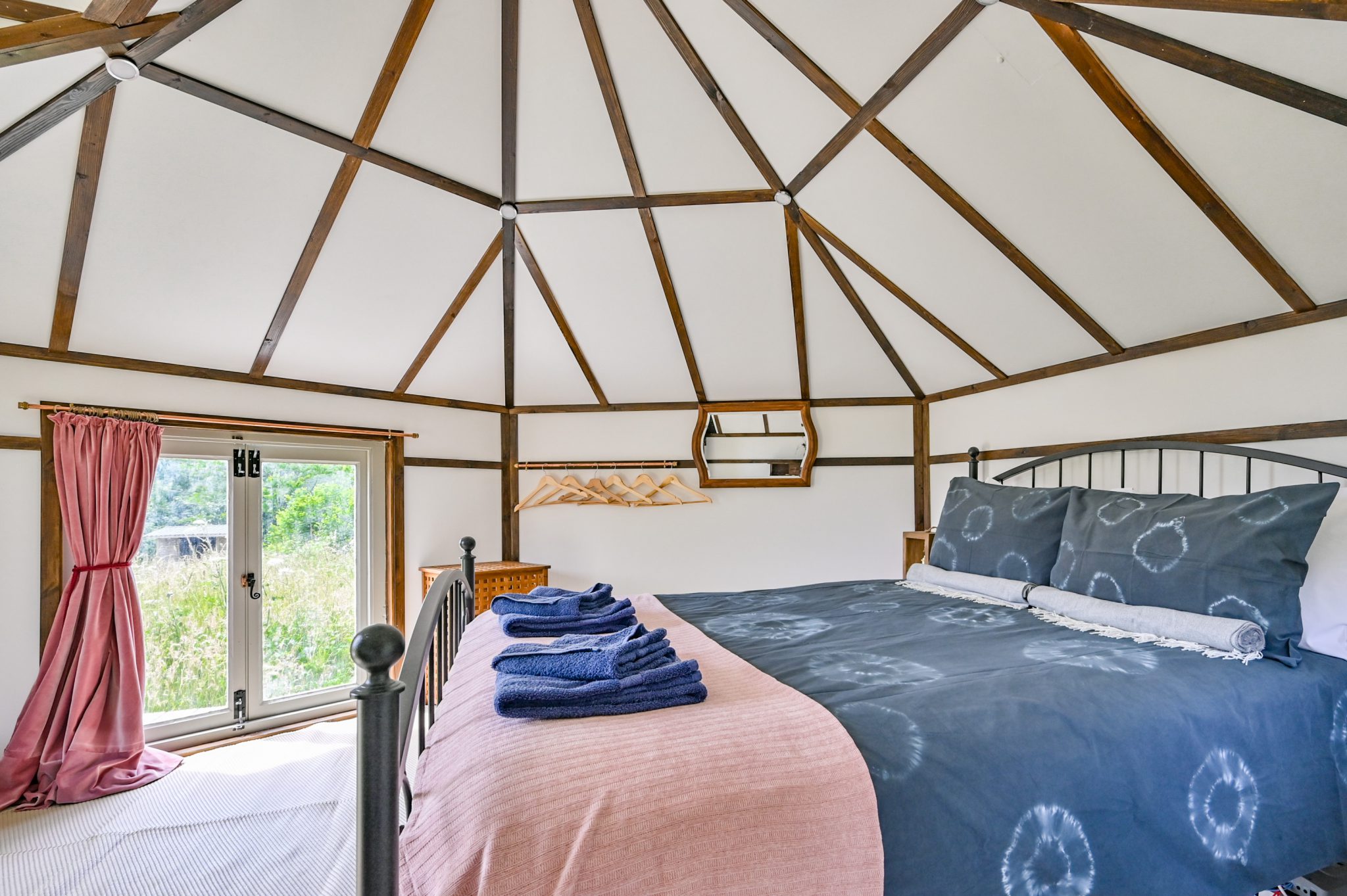To Tie-Dye or Not, that is the question!
Here at Lower Marsh Farm, we strive to do our best to reduce our negative impact on the planet in several ways, including managing the land in a way to conserve its beauty among many other initiatives. You can read more about these here.
As part of our regular review process, we have recently started looking at our bed linen usage.
Linen within the hospitality industry is crucial to a guest’s experience. Here, we have always used 100% white Egyptian cotton bedlinen in our bedrooms.
White Cotton Fabric
The production of white cotton fabric has a heavy carbon footprint and very polluting when compared with other materials. A huge percentage of the world’s usage of pesticides and insecticides is used in the production of cotton (6-11% of the world’s pesticides and 16-24% of all insecticides, more than any other crop – read more here), causing pollution and significant use of fossil fuels. In addition enormous volumes of water are used (about 2,700 litres of water are needed to produce a single cotton t-shirt which is enough drinking water for an individual for two and a half years – read more here). Then to create bright white cotton requires extensive use of bleach (generate from the highly toxic chlorine industry).
Non Cotton Fabrics
Non cotton fabrics, such as polyester and nylon (i.e. petrochemical based textiles) are unpleasant and unhealthy to sleep in (due to their inability to adsorb water vapour and allergen properties – read more here) and are created for the unsustainable heavily polluting fossil fuel industry. In addition, plastic fabrics cause huge amounts of water microplastic pollution when being washed. The impacts of this on human health is not yet understood. Disposal of these items at the end of their life is also problematic. With natural materials we just put in the compost heap or use to supress weeds in the kitchen gardens! So, these petrochemical materials are a non-starter in our book.
Bamboo
We looked at bamboo materials and the growing process looks to be much more sustainable than cotton but as yet the processing to make the soft material desired for bed linen is less palatable (the viscose process – read more here). There are better production processes but as yet these materials are not widely available as bed linen. So, what should we do while waiting for the fabric industry to clean up its act?
Moving to only purchasing organic cotton (which we did a few years ago) is a step forward but doesn’t resolve all of our concerns. We also considered moving to unbleached material, but this is an off white / beige colour which guests responded to as unclean! We considered coloured material, but this again is bleached prior to being dyed.
Tie-Dye
 So, not to be beaten, we have begun the process of tie-dying our linen (hours of fun for the housekeeping team – “You’re welcome!”). This not only allows us to purchase unbleached organic cotton bed linen but to also re-use existing items which have minor damage to extend their lifespan. Thus feeding the sustainability mantra of reduce, reuse and only if you cannot then recycle.
So, not to be beaten, we have begun the process of tie-dying our linen (hours of fun for the housekeeping team – “You’re welcome!”). This not only allows us to purchase unbleached organic cotton bed linen but to also re-use existing items which have minor damage to extend their lifespan. Thus feeding the sustainability mantra of reduce, reuse and only if you cannot then recycle.
We are also using this process to make our rooms more colourful and cheerful. The plan is to use this tie-dyed linen and the colours in them to inform new bedroom interior schemes going forward.
